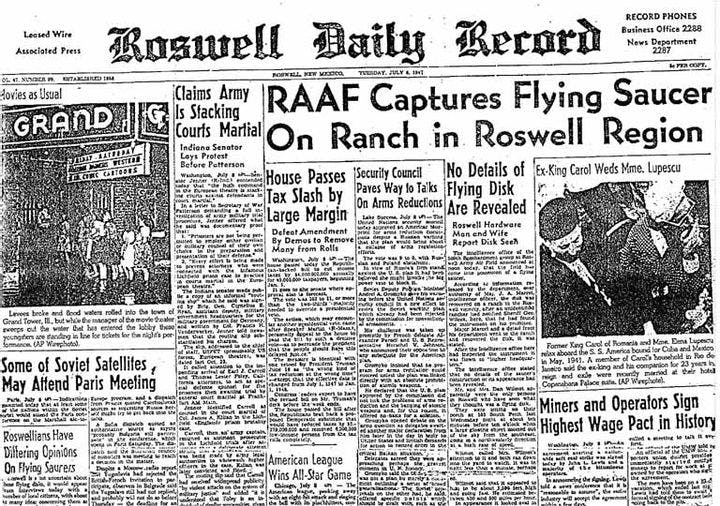Summer 2013
Are we less gullible than we used to be?
– The Wilson Quarterly
Where have all the UFOs gone?
One summer night in 1981, Stuart Walton watched a flying saucer hover in the sky outside his bedroom window. He saw “a strikingly large craft of some kind, flattish but with rounded edges.” Pulsing with white lights, the ship moved back and forth before disappearing into a cloud.
Such sightings were common enough that for years a British military unit investigated reports of unidentified flying objects (UFOs). But the investigations came to nothing. People were usually seeing car headlights, weather balloons, and Frisbees — not flying saucers. In 2009, the British government shuttered the UFO outfit. And over the years, reports of the extraterrestrial and the supernatural — spacecraft, ghosts, and spirits — have dwindled.
Have the aliens gone home? Are we less gullible than we used to be?
If UFOs still lurk, people are too jaded to notice them, argues Walton, a British author writing in Aeon Magazine. Commercial spectacles have made cynics of all of us, dulling our senses of wonder and awe. “In previous centuries, what was visually remarkable stood for the otherworldly, the spiritual.” But now we see dazzling sights every day. Instead of evoking the divine or the unseen, spectacles entice us to buy toothpaste, thrill us in the theater, or beckon us to click the “Like” button.
Much of what we’re bombarded with is pure fantasy. Advertisers paint spectacular worlds of consumer bliss. People cope by embracing blanket disbelief. In 1896, some audiences at the first movie projections fled theaters when a train seemed to bear down on them from the screen. Now we know better than to trust our senses. We treat everything — from Hollywood special effects to incredible YouTube videos to strange phenomena observed late at night — with an “incurious skepticism.”
Even as technology improves our ability to document our surroundings, people keep their eyes peeled for fakery. The moon landings were staged, they say. A camera crew and a movie set are all it would take. “We now extend the same degree of undifferentiating refusal even to those phenomena that, while hard to credit, deserve to be heeded,” Walton writes. “Climate change might be the most obvious current instance, but, at its most noxious, skepticism results in an unwillingness to believe in others’ suffering. The attitude of wholesale rejection, by which one might stand a chance of becoming impervious to fraud, is thus bought at the ever greater risk of nihilism.”
Walton yearns for the time when people were more attuned to wonder. “The baroque façades and soaring spires of cathedrals, the carmines and cobalts of stained-glass windows with the sun streaming through them, devotional processions and carnival parades, gargoyles, misericords, miraculous relics — all attested that there was an intangible reality beyond the physical one, a reality that could at most be suggestively delineated in extraordinary sights.”
Today, in a society “entirely mortgaged to the secular spectacular,” the other reality is lost. “The visible and the invisible, the material and the spiritual, the phenomenal and the noumenal are no longer the distinct realms they once were. They have become mutually permeable to their mutual diminishment.”
Walton remains a believer in that other realm. Several years ago, he watched a documentary on the decline in UFO sightings in Britain. “One man had seen a mysterious object in the sky,” Walton writes of a witness in the documentary. “He had drawn a sketch of [the UFO] soon after. Hearteningly enough, it was identical to mine.”
THE SOURCE: “Seeing and Believing” by Stuart Walton. Aeon Magazine, April 5, 2013.
Cover photo courtesy of Wikipedia
